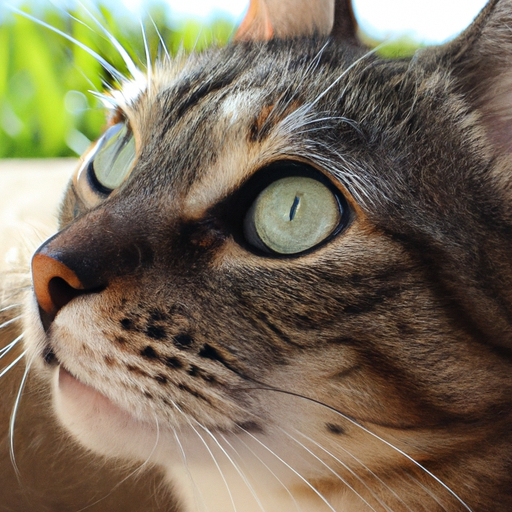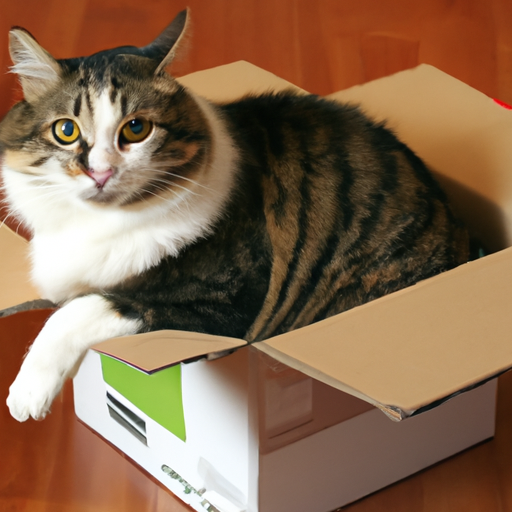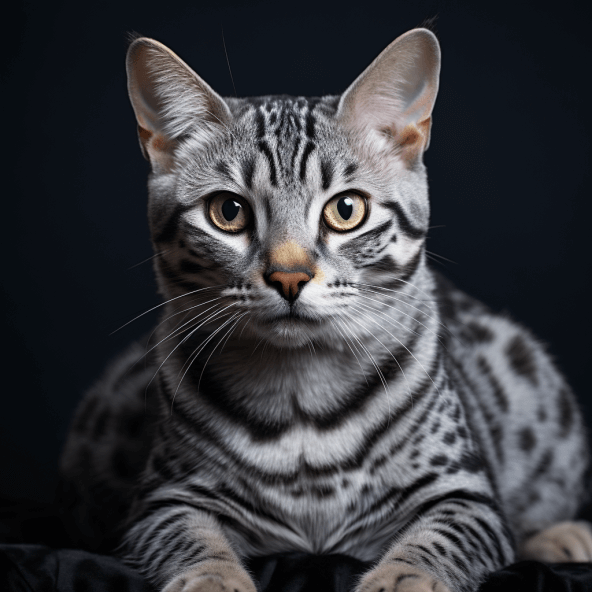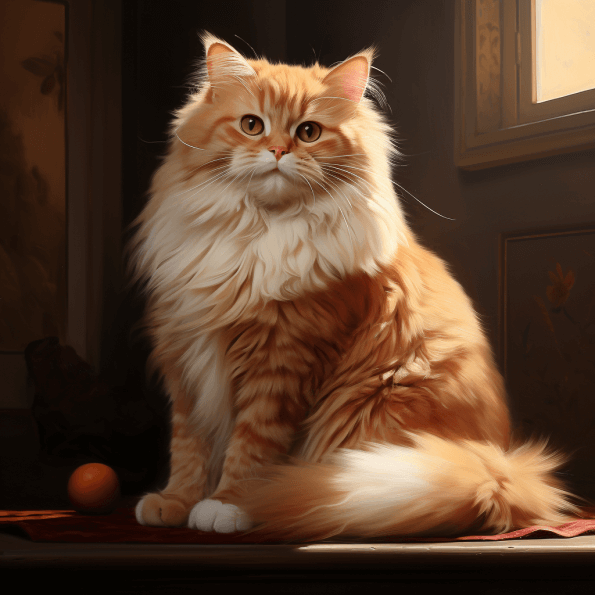Chartreux
Ever been curious about the captivating world of Chartreux cats? In this special feature, you’ll get to explore everything about this charming cat breed known for its robust physique, brilliant blue coat and a pair of mesmerizing gold or copper eyes that simply spell magic. This breed hails from France, and they carry a rich legacy embedded with intriguing folklore and romantic history. As you navigate through this article, you’ll uncover essential details about their distinct characteristics, behavioral patterns, personality traits, and learn practical tips on how to care for these blue beauties. So brace yourself for an exciting adventure into the mesmerizing universe of Chartreux cats.
History and Origin
Origin of the Chartreux breed
The Chartreux cat breed is an ancient one, and its origins are a rather intriguing mystery. Stories swirling around this feline suggest that they originated from France and have been around since the 16th century, quietly enchanting cat enthusiasts with their distinctive look and charming demeanor. One popular rumor is that their initial recruitment was by Carthusian monks to protect the monastery’s grain stores from rodents. However, no concrete evidence substantiates this thrilling piece of lore.
Historical significance of Chartreux
On a historical note, the Chartreux’s distinct appearance and name have been frequently mentioned in French literature dating back as far as the 18th century. They were held in high regard for being exceptional hunters and their warm, woolly blue coats. Over time, the Chartreux breed broadened its appeal beyond the borders of France, spreading its unique charm worldwide. They’ve survived wars and persecution, making their enduring existence a testament to their resilience and adaptability.
Physical Characteristics
Body structure of Chartreux
Chartreux cats are renowned for having a robust and muscular body structure. They possess a medium to large size frame, under which you’d find a sturdy bone structure. Their physical attributes contribute to their reputation as lynx-like creatures. Their heads are shaped like a rounded trapezoid with high, definite cheekbones, and they’re recognized for their full and chipper cheeks, especially mature males.
Color and coat aspects
A Chartreux’s coat is an appealing shade of blue, varying in a wide spectrum from a light silver hue to a darker, slate gray. Their fur is dense, thick, and slightly woolly in texture, making them incredibly cuddly to the touch. This double-coated fur serves as a cozy layer of protection against any weather.
Weight and size of Chartreux
Full-grown Chartreux cats range in weight from 7 to 16 pounds, with males typically being larger in size compared to their female counterparts. Their size and weight contribute to their sturdy appearance, making them seem larger than they truly are.
Unique physical traits
But what truly makes a Chartreux cat stand out, are their large, expressive copper or gold-colored eyes – almost suggesting an intriguing, piercing gleam. Their rounded paws, coupled with their long, tapering tail, add to their unique charm. To top it off, Chartreux kittens are born with all the hallmarks of an adorable cuteness overload: soft, blue-gray fuzzy fur, and tiny, stubby legs.
Behavioral Traits
Personality of Chartreux
Despite their imposing physique, Chartreux cats embody sweetness and affable spirits. They are known for being extremely intelligent and observant, often showing a keen excited interest in their surroundings. Often, you’ll find them in high vantage points observing their kingdom or watching their humans with a gentle, loving gaze.
Interaction with humans and other pets
Chartreux cats are fantastic with inter-species harmony. They gel remarkably well with humans, other cats, and even dogs. Their friendly, quiet nature makes them a joy in multi-pet households and they’re typically fond of children, displaying exceptional patience when safely handled by the little ones.
Unique behaviors
One characteristic you’ll find endearing is that Chartreux cats prefer to communicate using a language of soft chirps and trills, rather than the traditional meow. Interestingly, they’re known to have quite agile paws, often using them like hands to bat at toys, swipe tasty morsels off countertops, or playfully capture your attention.
Health and Longevity
Common health issues in Chartreux
As for health issues, the Chartreux are a generally healthy breed. However, they’re prone to certain conditions such as obesity, particularly if their diet and exercise aren’t appropriately managed. They also exhibit a genetic predisposition to polycystic kidney disease, hip dysplasia, and Patellar luxation.
Tips for maintaining health
You can keep your Chartreux healthy by ensuring they have a balanced diet, coupled with regular exercise. Scheduled vet visits and earlier detection tests can be effective in managing their health issues from a preventative standpoint. Maintaining healthy weight levels is also critical.
Lifespan and senior years of Chartreux
Chartreux’s life expectancy ranges from 12 to 15 years, but with proper care, they can live well into their late teens. In their senior years, they may require more frequent vet check-ups to identify any age-related health issues early, ensure they maintain healthy weight, and their diet may need adjustment for easier digestion.
Diet and Nutrition
Specific dietary requirements
Chartreux cats don’t have any specific dietary demands beyond those of a typical cat. However, since they are prone to obesity, a balanced diet rich in high-quality proteins and low in carbohydrates is essential.
Recommended food items
Wet foods, dry kibble, or a mix of both would suit them well. Preferably, the food should include ingredients such as chicken, fish, or beef. Foods with appreciable fiber content can assist to manage their weight and digestion. Fresh drinking water must always be readily available to them.
Foods to avoid for Chartreux
Avoid giving Chartreux foods high in sugars or artificial additives. Wary of foods rich in fats too. Also, foods like chocolate, onions, grapes, and caffeinated items are toxic to cats and should be strictly avoided.
Exercise and Activity Level
Activity level of Chartreux
Chartreux cats are moderately active. They enjoy engaging in playtime, stalking toy mice or climbing cat trees. Nevertheless, they’re also quite content with lounging around, watching the world go by from a cozy window sill.
Required physical exercises
Physical engagement can be in the form of interactive games such as feather wand chasers, puzzle toys holding hidden treats, or even adventurous sessions on a cat tree or scratching post. These serve to exercise their body and stimulate their sharp minds.
Interactive games and activities
Creating an engaging environment with a variety of toys can help keep your Chartreux entertained. These could include moving laser toys, interactive puzzle feeders, or even a simple toy mouse to pounce on. They may also enjoy high lookout spots for surveillance-like activities.
Training and Intellect
Intellectual capabilities
Chartreux cats are incredibly smart. They quickly learn the routines of their home and can figure out how to open cabinets or doors with a little bit of practice.
Training methods suitable for Chartreux
These intelligent cats respond positively to reward-based training tactics. You can train them to perform tricks, leash walking, or respond to commands using treats as an incentive. Remember, patience is key during training and it’s essential to provide them with lots of praise and encouragement.
Socialization needs
Chartreux cats need socialization from a young age. This involves exposure to various people, pets, and experiences, which assists in solidifying their friendly and outgoing nature.
Grooming and Care
Grooming requirements
Chartreux have a thick, double layer coat which is relatively low maintenance compared to other breeds. Their coat doesn’t mat or tangle easily. However, an occasional brushing once a week could help keep their coat healthy, shiny, and reduce shedding.
Bathing and brushing tips
They rarely need baths, only when they are noticeably dirty. If bath time is necessary, always use a cat-friendly shampoo. For brushing, use a stainless steel comb or grooming mitt to gently work through their fur, picking up loose hair and massaging the skin.
Dental and nail care
Regular dental check-ups and at-home dental care like teeth brushing can help maintain their oral health. Nails should be trimmed every few weeks to reduce overgrowth and splitting.
Ideal Living Conditions
Suitable environment for Chartreux
Chartreux cats are adaptable and can thrive in various environments, be it a cozy apartment or a sprawling farm. They appreciate the comfort of indoor environments but also enjoy exploring safely enclosed outdoor areas.
Indoor vs. outdoor living
Chartreux cats are content living indoors and can adapt to an indoor life comfortably. However, if you do allow them to venture outdoors, ensure it’s a safe and controlled environment to ensure their protection from dangers such as traffic, wild animals or humans with ill intentions.
Essential items for creating a comfortable living space
An ideal living space should include soft beds for lounging, scratch posts for claw maintenance and ample toys for amusement. A cat tree, ideally near a window, would be an elevated bonus for them to observe their surroundings.
Adopting a Chartreux
Finding a reputable breeder
If you decide on getting a Chartreux from a breeder, ensure that the breeder is reputable. They should provide a complete medical history, be knowledgeable about the breed, and display genuine care for their cats’ well-being.
Choosing a healthy kitten
A healthy, well-socialized Chartreux kitten will appear active, curious, and welcoming to your touch. Their eyes and nose should be free of any discharge, their coats smooth and shiny, and their body free from unusual lumps or rashes.
Adoption process and checklist
The adoption process involves an application and potentially a home visit. Be ready with a checklist to ensure a smooth transition — cat carrier, litter box, quality cat food, bedding, grooming tools, and toys are essential.
Potential costs associated with owning a Chartreux
The initial cost of acquiring a Chartreux can vary, but bear in mind the ongoing costs of vaccinations, regular vet check-ups, feeding, grooming, and potential unforeseen health issues. The financial commitment to their well-being is a long-term one but the joy, companionship, and endless love they provide could make it all well worth it.
In conclusion, Chartreux are an endearing breed, an amalgamation of muscular physiques, loving personalities, intelligent minds, and rich histories. They are a joy to share your life with, and taking on the responsibility to care for one brings many rewarding experiences in return.







